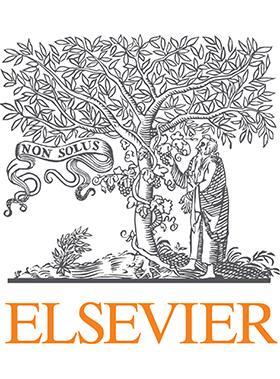Advances in clinical technology mean it is increasingly well placed to augment – but not replace – healthcare professionals, a recent HSJ webinar heard

There was a deliberately provocative question at the heart of HSJ’s recent webinar with Elsevier: could technology ever replace clinicians?
It is a question which once would purely have been in the realms of science fiction. But the development of the likes of artificial intelligence and big data analytics – with some research studies suggesting AI has become as good at diagnosing certain conditions as humans – would seem to suggest it is now beyond a purely fictional issue.
Sponsored by
For David Rosser, computers completely replacing clinicians does remain beyond the realms of reality, for the foreseeable future at least. But the chief executive at University Hospitals Birmingham Foundation Trust – who was formerly its medical director – contended that technology could and should take some tasks currently performed by clinicians.
The role for leaders, he suggested, was to “steer that in a helpful direction”. “For me, ‘helpful direction’ means offloading mundane tasks from clinicians. There’s a lot that our patients ask of us that is pretty binary. There are simple requests for information: ‘Can I have the access to the tests that you did? Can I have access to what that means?’”
He gave the example of the “tens of thousands of patients” whose primary interaction with the trust he leads is to have a blood test every six months to monitor a condition. “There is no reason at all that process can’t be entirely automated with a reminder saying: ‘Drop in, have your blood test, two hours later we’ll send you a text saying everything is still okay, press on.’
“Nobody is talking about shutting down face to face pathways,” he emphasised, “but many patients are more than happy with that sort of thing”.
He also saw unexploited potential for technology to get patients to the right clinician at the right time. “It’s pretty clear that there are systems out there that are very good at taking groups of symptoms and saying: ‘The best guess of the right person for you to see is [for instance] a cardiologist, is a respiratory physician,’” he said.
“We’ve done some scoping work that says we would probably liberate about 750,000 appointments across primary and secondary care, per year, in Birmingham and Solihull if we simply did that navigation and surveillance.”
It’s a striking and specific example of where technology might make a difference to clinicians’ day-to-day practice. For Ian Chuang, considering innovation in context is important. The chief medical officer at Elsevier suggested true value comes not from considering what technology can do per se, but where it might do something that could help healthcare professionals.
“It’s about clinicians being augmented, or assisted, by information technology,” said Dr Chuang. “It is about computers doing what they do best, which is processing minutia. Leveraging technology where it adds value, where it augments them and supports clinicians, is key.”
He continued: “There’s nothing wrong with having a template to guide a decision process that a clinician would have logically been making anyway. It’s mapping, or assisting, augmenting, their natural clinical decision process. Not replacing them, not trying to complicate their life, but really augmenting it to make it more streamlined and more reliable.”
But as the webinar discussion identified, there may sometimes also be work to do in streamlining the technology itself. “I think it’s the role of IT to try and reduce the administrative overhead for staff generally,” contended Ian Frost, deputy director digital enablement outpatient transformation programme at South West London Health and Care Partnership (the integrated care system for the area).
“In my case, [it’s] trying to reduce the number of systems clinicians need to deliver care. We’ve still got your pathology system is different from your radiology system which is different from your PAS as background issues. Some trusts are further ahead in that journey than others, but there are still multiple systems, departmental systems and suchlike.”
So what might an environment in which clinical technology is unified, and takes away the mundane tasks from clinicians, actually look like? Professor Rosser argued something which requires some thought. Firstly, he argued it was important to recognise it does not look like a setting in which there is significantly more capacity.
“We’ve got a massive capacity gap,” he pointed out. Using technology for navigation, or administration, or clinical decision support does not immediately solve that.
Reflection was also required, he said, on what the job of a clinician looks like without binary decisions. “If you take away the easy decisions, that pushes clinicians into a different space and you’ve got to have very sensible conversations about that.”
He argued that if a clinician sees fewer routine follow up patients per clinic, that does not mean he or she can see an even higher number of complicated patients.
“That’s partly because of time, because complex conversations take longer, but partly because actually, for instance, asking oncologists to see 15, 16, new diagnosis patients a day is difficult. It’s emotionally really difficult. There are all sorts of things that spin out of that, in terms of the different types of demand we make on clinicians.
“There is a reality that lots of clinicians are actually not really terribly good at that emotional, difficult space. Once you take away the binary, obvious, stuff, that’s all that’s left. So there’s some thinking to do for certainly the medical profession about how we prepare ourselves to move into that more difficult space.”
But he was clear it’s thinking worth doing, to enable the NHS to operate as efficiently as possible. “That mantra about getting people working at the top of their skill set, that I think the technology has a very big place in,” concluded Professor Rosser.
An on demand version of this webinar is available. If you had already registered for the event, click here to access the recording.
For those who have yet to register, click here and scroll to the foot of the page to complete the form. Details of how to access the on demand recording will then be sent to you via email.


























